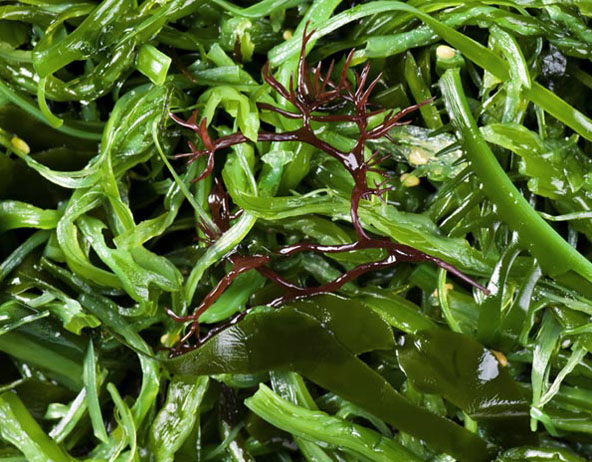
Nori is best known as the seaweed used to make sushi rolls. You can make your own at home, but make sure you use the untoasted nori sheets for maximum nutrient content.
Kelp, also known as brown algae, is the most common seaweed found along the ocean shores. Due to its thick leaves it is perfect for a hot seaweed bath. It is also available in supplement form.
Dulse is a red seaweed and can be bought either whole or as flakes. Dulse sold as flakes does not need to be soaked and can be added straight to any meal. Whole dulse is better soaked, drained of water, and sliced before adding to your dish. It is great to use as seasoning on salads, vegetables and soups.
Arame is a ‘black’ stringy looking seaweed. It needs to be soaked for a few minutes before it is added to cooking, where it will double in size. It can be added to any grain dishes, stir fries, soups, salads and curries.
A deep green seaweed, wakame is sold fresh or dehydrated. It tastes best when hydrated in water for a few minutes before being used. Sprinkle in soups, stocks, stews, stir fries or savory dishes.
Used in Japan for centuries as a mineral rich flavour enhancer. Add a strip of kombu when cooking beans to make them more digestible and to reduce gas. Add a strip of kombu to your sprouts when soaking them to allow them to soak up the minerals.
When sourcing or buying seaweed, choose certified organic brands where possible. Seaweeds will absorb the properties of the water in which they are grown, so you want to ensure that they have been grown and harvested in unpolluted waters that are pure, and free from harmful chemicals.
We have this available on https://seatechbioproducts.com/marine-algae-micro-and-macro-seaweeds
Source: http://www.foodmatters.com/superfoods/seaweed-superfoods